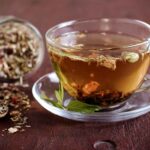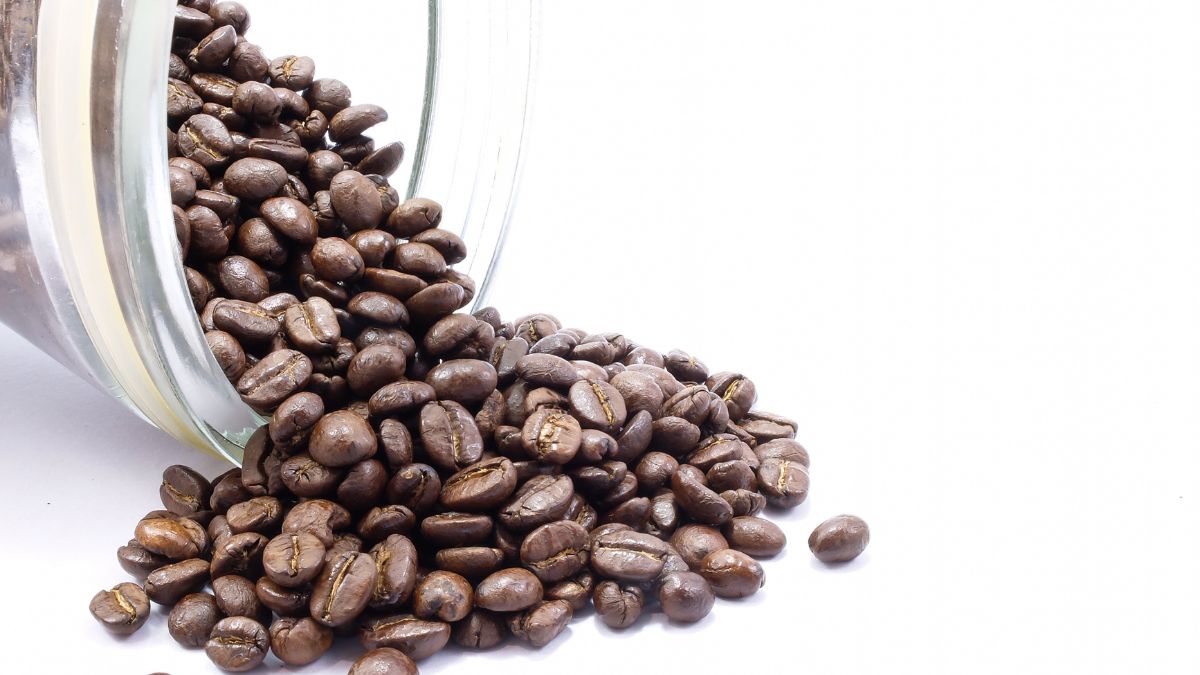Introduction
In the quiet early morning hours, the tantalizing aroma of a fresh coffee brew wafts through homes across the globe. It’s an unmistakable scent, a signal of the start of a new day, and for many, an essential ritual. But beneath the surface of this daily practice lies an intricate story, a journey that spans continents and centuries alike. The fundamental question we’ll unravel today is: Where does coffee come from? A simple query, with a multi-layered answer, weaving through the lush landscapes of distant lands and the diligent labor of countless individuals.
The coffee that fuels our day, enlivening our morning routines and underpinning our social interactions, begins its journey far from our kitchen appliances and local cafés. Its roots stretch back to ancient civilizations and traverse across the equator, forming a global tapestry rich with history, culture, and tradition. Throughout this article, we’ll traverse this expansive narrative, exploring the origins, the journey, and the varied cultures of coffee, offering a comprehensive understanding of its place in our world and our cups.
Did you know? Globally, we consume approximately 2.25 billion cups of coffee every day, a testament to its pervasive presence in our lives.
A dive into the history and journey of coffee is more than an exploration of a beverage. It is a closer look at geopolitical structures, socio-economic conditions, and the cultural significance imbued in this robust drink. As we dissect the story, remember that each cup of coffee is a narrative, not just of a single bean or a single farmer, but of entire communities and ecosystems.
Bear with us as we embark on this aromatic journey, and let’s together uncover the answer to where our beloved coffee comes from, tracing its path from distant fields to our very mugs.
The Deep Roots of Coffee: Its Original Homeland

Dipping into the vibrant landscapes of Ethiopia, the tale of coffee intertwines with legend and tradition. Ethiopia is widely recognized as the cradle of the coffee bean, where the lush, wild coffee forests present a stark contrast to the meticulously arranged coffee plantations found elsewhere globally.
Tracing Back to the Origins
Navigating through the verdant Ethiopian landscapes, we are introduced to an ancient tale of discovery. The legend speaks of Kaldi, a goatherd, who noticed his goats prancing energetically after nibbling on the red cherries from a certain plant. Intrigued and tasting them himself, he experienced a novel vitality. This accidental discovery around the 9th century, as narrated by oral traditions, is where our coffee narrative commences.
“Coffee is a lot more than just a drink; it’s something happening.” – Gertrude Stein
The term ‘coffee’ is believed to be derived from ‘Kaffa,’ a region in Ethiopia, weaving the country indelibly into every brew we enjoy. Yet, it wasn’t until several centuries later that this energetic bean began to seep into the global consciousness and trade routes.
The Ethiopian Coffee Legacy
Ethiopia not only gifts us the genesis story of coffee but also introduces us to a rich tapestry of coffee varieties and traditions. The nation is home to some of the world’s most sought-after beans, like Sidamo and Yirgacheffe, celebrated for their fruity acidity and bright, floral notes. Ethiopian coffee isn’t merely a beverage; it’s a ceremonial element, deeply interwoven into the societal fabric.
| Ethiopian Coffee Varieties | Tasting Notes | Growing Region |
| Sidamo | Floral, Citrusy | Sidamo |
| Yirgacheffe | Jasmine, Lemon | Gedeo Zone |
| Harrar | Spicy, Winey | Harrar |
| Geisha | Jasmine, Tropical Fruits | Various |
The Ethiopian Coffee Ceremony, an integral socio-cultural activity, emphasizes respect and friendship. It’s a meticulous process where green beans are roasted, ground, and brewed in front of guests, creating not just a cup of coffee but a sensory experience enveloped in rich aromas and communal bonds.
This intricate practice of consuming coffee, coupled with the biodiversity of Ethiopian coffee plants, offers a complex and nuanced perspective on coffee’s origins. Here, coffee is not simply cultivated; it grows wild, permeating the nation’s ecology and culture, making Ethiopia an intrinsic chapter in the global coffee story.
Understanding Ethiopia’s pivotal role in coffee history and culture allows us to recognize the deep-rooted connections between our contemporary coffee experiences and ancient traditions. Each sip becomes a homage to the wild coffee forests of Ethiopia and the rich cultural practices that continue to surround this cherished beverage.
As we transition from these historical and cultural depths, our journey morphs into an exploration of the vast geographies that have adopted coffee, shaping its cultivation and further writing its global narrative.
The Coffee Belt: Where Coffee is Grown Globally
An invisible band wraps around our globe, hugging the equator tightly; within this strip, coffee trees generously offer their cherries, each bean encapsulating a unique tale of its own terrain. This is the Coffee Belt, a geographical wonder that spans across continents, offering optimal conditions for coffee cultivation.
Defining the Coffee Belt
Positioned between the Tropic of Cancer and the Tropic of Capricorn, the Coffee Belt is characterized by its consistent temperatures of 60-70°F (15-24°C) and its distinctive wet and dry seasons, which provide a conducive environment for coffee trees to flourish. But what exactly makes these climatic conditions so vital for coffee cultivation?
- Temperature: A consistent, warm temperature ensures the healthy growth of coffee cherries and prevents frost damage.
- Rainfall: Adequate rainfall is essential during the growing season, while a dry period is vital to aid the maturation and harvesting of the beans.
- Altitude: Depending on the proximity to the equator, coffee is grown at varying altitudes to accommodate temperature needs.
- Soil: Volcanic soils are often associated with high-quality coffee due to their richness in minerals.
Country Profiles: Top Coffee Producers
The Coffee Belt hosts a variety of countries, each contributing its signature to the global coffee tapestry. Let’s take a glance at a few notable players:
- Brazil: The largest producer of coffee, Brazil’s vast plantations lie under sunny skies and are known for their chocolatey, nutty beans with a broad profile, satisfying diverse palates.
- Colombia: Colombian coffee is often regarded as some of the highest quality coffee in the world. Colombian coffees are known for their smooth, mild flavor and balanced acidity.
- Ethiopia: As previously detailed, its diverse, complex, and highly sought-after beans make it not only the birthplace of coffee but a key player in specialty coffee sectors.
- Vietnam: Predominantly a Robusta producer, Vietnam offers beans that are typically used in espresso blends, instant coffees, and traditional Vietnamese coffee brews.
| Country | Typical Flavor Profiles | Notable Varieties/Regions |
| Brazil | Nutty, Chocolatey, Sweet | Sul de Minas, Cerrado |
| Colombia | Smooth, Fruity, Bright Acidity | Huila, Cauca |
| Ethiopia | Floral, Fruity, Bright | Yirgacheffe, Sidamo |
| Vietnam | Bold, Earthy, Bitter | Dalat, Central Highlands |
This table illustrates a mere snippet of the global panorama, yet it underscores the immense diversity encapsulated within the Coffee Belt. These nations, amidst others, weave a global network where beans are traded, tales are interchanged, and techniques are evolved, culminating in the rich, aromatic brew that graces our cups.
Navigating through the Coffee Belt, one not only explores varied landscapes and beans but also encounters diverse cultures and practices, each shaping the coffee in unique, flavorful ways. These beans traverse continents, experiencing transformations, embodying varying practices and technologies, to finally merge into the complex brew we relish each morning.
As we transcend from understanding the geographical breadths that coffee envelops, let’s delve deeper into the life cycle of a coffee bean, tracing its journey from a budding blossom to the robust bean that fuels our days.
From Bean to Brew: The Process of Coffee Making

Processing the Cherries
Coffee, adored globally for its robust aroma and rich flavor, embarks on a meticulous journey from the fertile soil to your cherished cup. Processing the cherries, a pivotal phase in this voyage, involves transitioning the harvested coffee cherries into green coffee beans, ready for roasting.
The Diverse Paths of Processing
- Wet Process (or Washed): The cherries are pulped to remove the skin, and the mucilage-covered beans are fermented in water tanks. Subsequently, the mucilage is washed off, revealing the parchment-covered beans, which are then dried.
- Dry Process (or Natural): Cherries are spread out, often in the sun, to dry as a whole entity. Once dried, the exterior layers are mechanically removed.
- Honey Process: A method that balances between wet and dry processing. The skin is removed, but some mucilage remains during the drying phase, influencing the sweetness in the resultant bean.
Each method imparts distinctive traits upon the beans:
- Flavor Impact: Wet processing typically yields cleaner, brighter, and fruitier profiles, while dry processing can imbue beans with a fuller body and robust, often berry-like flavors. Honey processing, reveling in the sweetness of the mucilage, can create beans with a pronounced, sugary sweetness.
- Quality Influence: The methodical precision in wet processing often results in uniformly high-quality beans, whereas the dry method might introduce variability, crafting a unique, but sometimes inconsistent, flavor profile.
Table: Impact of Processing Methods on Coffee Beans
| Processing Method | Typical Flavor Profile | Quality and Consistency |
| Wet | Clean, Bright, Fruity | High, Uniform |
| Dry | Bold, Robust, Berry-like | Varied, Distinctive |
| Honey | Sweet, Smooth, Balanced | Moderate, Particular |
Indeed, the path chosen in processing not only shapes the flavor contours of the beans but also paints every sip with a backdrop of its origin, illuminating the craft and care enveloped in each method.
Roasting to Perfection
The transformation from a green coffee bean to a dark, aromatic nugget is an artful journey, where roasting plays the charismatic conductor, orchestrating a symphony of flavors, aromas, and colors that define your beloved brew.
A Symphony of Heat and Chemistry
Roasting, a complex ballet of heat application and chemical reactions, guides the beans through various stages. It begins with the drying phase, as beans lose moisture, followed by the first crack, a physical reaction reflecting internal pressure build-up. Then, the development phase cultivates flavor, color, and aroma, right until the second crack, after which dark roasts are typically halted.
The magical cascade of events inside the beans during roasting unlocks a spectrum of flavors – from sweet to bitter, floral to nutty, and bright to bold – crafting the character that will infuse each brewed cup.
The Palette of Roast Profiles
Navigating through roast levels, we traverse a landscape where time and temperature sculpt the beans’ personality:
- Light Roasts: Often halted at the first crack, light roasts boast higher acidity, lighter body, and often exhibit floral, fruity, or grassy notes.
- Medium Roasts: Ceasing just beyond the first crack, medium roasts strike a balance, offering a mellow acidity, fuller body, and a harmonious meld of varied flavor notes.
- Dark Roasts: Journeying into the realms of the second crack, dark roasts present a bold body, subdued acidity, and dominant tones of chocolate, nuts, or even spicy notes.
Table: Distinguishing Characteristics of Roast Levels
| Roast Level | Acidity | Body | Flavor Notes |
| Light | High | Light | Fruity, Floral, Grassy |
| Medium | Moderate | Medium | Balanced, Varied |
| Dark | Low | Full | Chocolatey, Nutty, Spicy |
Each roast level, akin to a different brushstroke, colors your cup with its own distinctive shade, whispering tales of its journey through the roaster into your senses with every sip.
Tailoring to Taste: Roast and Brew Harmony
When the beans are matched aptly with a brewing method – like a light roast with pour-over or a dark roast for espresso – the symphony composed during roasting finds its perfect stage, allowing you to experience the full depth and breadth of its performance.
This beautiful union, where the roast level and brewing technique dance in harmony, invites you into a world where the tactile and the sensory intertwine, facilitating not just a beverage, but an experience, a moment where the tales of distant lands and skilled hands are cradled in your cup.
Brewing Methods Explored

Brewing, a crucial crescendo in our coffee bean’s journey, intertwines scientific precision and artisanal flair, crafting a brew that is both an art and a science. Navigating through diverse brewing methods, we encounter varied landscapes where the characteristics of our meticulously processed and roasted beans are showcased uniquely.
A World of Brew: Techniques and Tools
- Pour-Over: Celebrating clarity and complexity, pour-over method allows a clean, nuanced cup, often revealing the subtle notes and bright acidity, particularly enticing with light to medium roasts.
- French Press: Immersion brewing that gifts the cup a rich, full-bodied character, emphasizing deeper, robust notes and often preferred with medium to dark roasts.
- Espresso: A method where pressure drives hot water through finely-ground coffee, extracting a concentrated, bold shot that is a delightful playground for medium and dark roasts.
- Cold Brew: Steeping coarsely ground beans in cold water for an extended period, cold brew offers a smooth, sweet, and low-acidity cup, where the inherent sweetness of a medium roast or the boldness of a dark roast can shine.
Crafting Character: The Brew’s Impact on Flavor
- Extraction: The brew time and grind size guide extraction, influencing whether the coffee unveils a balanced, under-extracted (sour), or over-extracted (bitter) profile.
- Texture: The brewing method also sculpts the body and texture of the coffee, from the light, tea-like consistency of pour-over to the rich, velvety body of a French Press brew.
Table: Characteristics of Different Brewing Methods
| Brew Method | Ideal Roast | Flavor Characteristics | Body |
| Pour-Over | Light to Medium | Clean, Nuanced, Bright | Light |
| French Press | Medium to Dark | Robust, Full, Deep | Full |
| Espresso | Medium to Dark | Concentrated, Bold, Complex | Variable |
| Cold Brew | Medium to Dark | Smooth, Sweet, Low-Acidity | Medium to Full |
Harmonizing Brew and Bean
In the elegantly intertwined world of coffee brewing, each method tells its own story of the bean. A pour-over might whisper gentle tales of floral fields and citrus groves, while an espresso might narrate a bold, passionate drama of dark cocoa and spicy undertones.
In this expansive world, your choice of brewing method isn’t merely a preparation technique; it’s a curator, selectively highlighting aspects of the beans, unveiling flavors, and crafting textures that shape your sensory experience. Thus, as you sip, you’re not merely consuming a beverage but partaking in a carefully choreographed performance, celebrating the bean’s journey from distant farms to your cup.
Fair Trade and Sustainable Coffee Production
Navigating through the fields of coffee cultivation, we’re introduced to an intricate network of farmers, traders, and consumers. Within this network, principles like Fair Trade and sustainable coffee production emerge as pivotal, ensuring the journey of the coffee bean is not only a flavorful adventure but also an ethical and sustainable one.
The Concept of Fair Trade Coffee
As we delve into the world of Fair Trade Coffee, we embrace a model where equitable trade, ethical procurement, and sustainable development coalesce to create a framework that supports and empowers coffee producers.
- Supporting Farmers: Fair Trade practices ensure farmers receive a fair price for their beans, which translates into a stable income, improving living and working conditions within farming communities.
- Encouraging Sustainability: Beyond economics, Fair Trade also involves adhering to environmentally sustainable practices, encouraging farmers to adopt methods that protect and nurture their lands.
- Building Community: The premium prices obtained under Fair Trade are often invested back into the community, enhancing education, healthcare, and infrastructure, fostering a nurturing environment for future generations.
Sustainable Coffee Farming
Exploring sustainable coffee farming, we witness a marriage between agricultural productivity and ecological responsibility. It’s an endeavor where the bounty of nature is respected and preserved, ensuring the land that generously provides the coffee cherries is nurtured in return.
- Environmental Stewardship: This involves practices like shade-growing coffee, utilizing bird-friendly habitats, and employing organic farming methods, which enrich biodiversity and sustain ecological balance.
- Social Responsibility: Sustainable farming also extends to ethical labor practices, ensuring workers are afforded fair wages, safe working conditions, and access to healthcare and education.
- Economic Viability: Ensuring that practices are economically feasible and beneficial for the farmers, enabling them to sustainably manage and profit from their lands.
Case Study: The Cafe Direct Producers’ Foundation, a charity run by coffee farmers, for farmers, exemplifies sustainability. They employ a holistic approach, integrating efficient, eco-friendly farming techniques with a cooperative model that empowers farmers, fostering a sustainable, community-driven approach to coffee production.
Exploring Varieties: Not All Beans are Created Equal
Diving deeper into the universe of coffee, we find a fascinating biodiversity within the beans. Different varieties of coffee not only signify diverse shapes, sizes, and colors but also encapsulate unique stories, terrains, and flavors. Let’s embark on an exploration into this splendid diversity.
Arabica and Robusta: A Comparative Analysis
Arabica Beans
- Flavor Profile: Renowned for its wide flavor spectrum, Arabica can traverse from sweet and tangy fruitiness to lush, vibrant floral notes, offering a comparatively higher acidity and a lighter body.
- Growing Conditions: Arabica, being delicate, necessitates meticulous care, thriving at higher elevations and demanding precise climatic conditions.
- Market Presence: Often heralded for its quality, Arabica prominently graces specialty coffee shops and premium markets.
Robusta Beans
- Flavor Profile: Robusta comes with a bolder, often nutty and chocolaty profile, accompanied by a lower acidity and a notably heavier body.
- Growing Conditions: Contrasting Arabica, Robusta is resilient, tolerating a wider range of climates and often flourishing at lower altitudes.
- Market Presence: Generally more affordable, Robusta is prevalent in commercial coffee blends, instant coffees, and some Italian espresso blends.
Table: Characteristics of Arabica and Robusta
| Variety | Flavor Profile | Acidity | Body | Optimal Growing Conditions |
| Arabica | Diverse (fruity to floral) | Higher | Lighter | Higher elevations, specific climates |
| Robusta | Bold (nutty to chocolaty) | Lower | Heavier | Lower altitudes, resilient |
Specialty Coffee and Unique Varietals
- Specialty Coffee: Transcending mere caffeine, specialty coffee embarks into a realm where each bean’s unique narrative, encompassing its origin, terroir, and farmer’s skill, is celebrated and savored.
- Unique Varietals: Within the umbrella of specialty coffee, you’ll find captivating varietals like:
- Geisha: Often adorned for its exquisite, jasmine-like floral notes and vibrant acidity.
- Bourbon: Cherished for its sweet, citric, and often complex flavor profile.
- Pacamara: Known for its bold size and an equally bold, nuanced cup.
These varietals, through their unique characteristics, offer a window into the geographical, climatical, and cultural tapestries from which they originate, inviting you to experience and appreciate the varied tapestries of the coffee world.
Exploring Varieties: Not All Beans are Created Equal
Diving deeper into the universe of coffee, we find a fascinating biodiversity within the beans. Different varieties of coffee not only signify diverse shapes, sizes, and colors but also encapsulate unique stories, terrains, and flavors. Let’s embark on an exploration into this splendid diversity.
Arabica and Robusta: A Comparative Analysis
Arabica Beans
- Flavor Profile: Renowned for its wide flavor spectrum, Arabica can traverse from sweet and tangy fruitiness to lush, vibrant floral notes, offering a comparatively higher acidity and a lighter body.
- Growing Conditions: Arabica, being delicate, necessitates meticulous care, thriving at higher elevations and demanding precise climatic conditions.
- Market Presence: Often heralded for its quality, Arabica prominently graces specialty coffee shops and premium markets.
Robusta Beans
- Flavor Profile: Robusta comes with a bolder, often nutty and chocolaty profile, accompanied by a lower acidity and a notably heavier body.
- Growing Conditions: Contrasting Arabica, Robusta is resilient, tolerating a wider range of climates and often flourishing at lower altitudes.
- Market Presence: Generally more affordable, Robusta is prevalent in commercial coffee blends, instant coffees, and some Italian espresso blends.
Table: Characteristics of Arabica and Robusta
| Variety | Flavor Profile | Acidity | Body | Optimal Growing Conditions |
| Arabica | Diverse (fruity to floral) | Higher | Lighter | Higher elevations, specific climates |
| Robusta | Bold (nutty to chocolaty) | Lower | Heavier | Lower altitudes, resilient |
Specialty Coffee and Unique Varietals
- Specialty Coffee: Transcending mere caffeine, specialty coffee embarks into a realm where each bean’s unique narrative, encompassing its origin, terroir, and farmer’s skill, is celebrated and savored.
- Unique Varietals: Within the umbrella of specialty coffee, you’ll find captivating varietals like:
- Geisha: Often adorned for its exquisite, jasmine-like floral notes and vibrant acidity.
- Bourbon: Cherished for its sweet, citric, and often complex flavor profile.
- Pacamara: Known for its bold size and an equally bold, nuanced cup.
These varietals, through their unique characteristics, offer a window into the geographical, climatical, and cultural tapestries from which they originate, inviting you to experience and appreciate the varied tapestries of the coffee world.
Your Cup of Coffee: More Than Just a Beverage
Navigating the streams of coffee knowledge, we pivot towards the essence of our daily cup, illuminating not just a beverage, but a culmination of labor, ethics, and informed choices. It’s vital to perceive that behind every sip, there’s a cascade of stories, efforts, and implications that should traverse through our conscience and preferences.
Recognizing the Labor Behind Every Sip
In each delicate bead of coffee that percolates through your brewer, the echo of countless hands—farmers, harvesters, roasters, and more—resound, symbolizing their toil, passion, and expertise.
- Farmers’ Struggles: Despite being pivotal, farmers often grapple with challenges like unpredictable weather, market prices, and access to equitable trading platforms.
- Harvesters’ Expertise: The labor-intensive harvesting process, demanding discernment and dexterity, is frequently undervalued and undercompensated in the global market dynamics.
- Building Appreciation: Acknowledging and valuing this labor not only elevates our coffee experience but also becomes crucial in advocating for fairness and sustainability in the coffee chain.
Quote: “May your coffee kick in before reality does.” Whilst this quote humorously nods to coffee’s invigorating essence, it also subtly invites us to confront the reality of its origins and value the hands that cultivate it.
Making Informed Coffee Choices
Your cup is an amalgamation of choice and impact. Making informed, mindful selections in our coffee procurement can channel our consumer power towards fostering ethical, sustainable practices within the industry.
- Choosing Fair Trade: Opting for Fair Trade-certified coffees ensures your beans are sourced from farmers who are compensated fairly and engage in sustainable practices.
- Supporting Ethical Brands: Aligning your purchases with brands that advocate for and practice ethical sourcing and sustainability propels the industry towards positive transformations.
- Exploring Direct Trade: Engaging with platforms or roasters that indulge in direct trade establishes a closer connection between you and the producer, often ensuring better remunerations and transparency.
Table: Ethical Coffee Brands to Consider
| Brand | Ethical Focus |
| Equal Exchange | Fair Trade, Organic |
| Counter Culture Coffee | Sustainability, Direct Relationships |
| Tony’s Coffees | Fair for All (Their Fair-Trade Standard) |
| Cafédirect | Farmer Partnership, Fair Trade |
As we weave through the narratives behind our cup, the significance of every choice we make, every brand we support, and every sip we take, becomes palpably evident. Each cup offers an opportunity to not only satiate our senses but also to uphold ethics, sustainability, and fairness.
FAQs: Everything Else You Want to Know About Coffee’s Journey
As we simmer through the intricate tales of coffee, various queries might percolate through your mind. This section aims to pour clarity into those cups of curiosity, exploring numerous facets of coffee’s enticing journey.
How is Decaf Coffee Made?
Decaffeination is a fascinating process that subtracts caffeine without dismantling the coffee’s inherent flavor complexities. Multiple methods exist, including:
- Solvent-Based Process: Utilizes chemical solvents like ethyl acetate or methylene chloride to absorb caffeine.
- Swiss Water Process: Relies on osmosis and activated charcoal filters to decaffeinate without solvents, often preferred for its organic methodology.
Why Does Coffee Taste Different Based on its Origin?
The distinct palate tapestries that beans from different regions weave arise due to:
- Terroir: The environmental conditions, including soil, climate, and altitude, influence the beans’ flavor profile profoundly.
- Processing Method: Whether beans are wet, dry, or honey processed, impacts their final taste significantly.
- Varietal: Different coffee varietals bring forth unique flavor notes and characteristics.
How Can I Ensure My Coffee is Sourced Ethically?
Embracing ethical coffee sourcing involves:
- Seeking Certifications: Look for labels like Fair Trade, Rainforest Alliance, or Organic that assure adherence to specific ethical and environmental standards.
- Supporting Transparent Brands: Brands that disclose sourcing practices, partnerships with farmers, and sustainability initiatives generally engage in more ethical coffee sourcing.
What’s the Difference Between Espresso and Regular Coffee?
The divergence between espresso and regular coffee lies within:
- Brewing Technique: Espresso is brewed under high pressure with a small water volume, whereas regular coffee uses various brewing methods without pressurized extraction.
- Grind Size: Espresso mandates a finer grind compared to the coarser grinds used for many regular coffee brewing methods.
- Flavor and Body: Espresso typically offers a bolder, more concentrated flavor and a creamier body compared to regular coffee.
Can Coffee Beans Go Bad?
While coffee beans do not exactly “go bad” or spoil in a traditional sense, they do lose freshness and flavor over time. To preserve their vitality:
- Store Appropriately: Keep beans in a cool, dark place, away from direct sunlight and in an airtight container.
- Use Timely: Preferably use within two weeks to a month of opening to enjoy optimal flavors.
Conclusion: A Voyage from Bean to Cup, Enlightening Every Sip
As we gently place our mugs down, reflecting upon the profound voyage from bean to cup, we observe coffee in a transformative light, appreciating it beyond its invigorating essence and delving into the stories, processes, and impacts interwoven in every sip.
The Enriching Journey From the nurturing soils that cradle the coffee cherries to the meticulous hands that cultivate, process, and roast them, our understanding deepens, recognizing that every cup resonates with the rhythms of various lands, climates, and communities.
The Ethical & Sustainable Dimension Navigating through the ethics and sustainability in coffee production, we, as consumers, get acquainted with the remarkable power our choices wield. Supporting Fair Trade, opting for sustainable practices, and aligning with ethical brands catalyze positive ripples across the coffee-producing landscapes, fortifying not just the industry, but also the lives within it.
A Global Affair Coffee, in its ubiquity, binds the world together in a rich tapestry of cultures, traditions, and practices. From the artisanal cafes of Melbourne to the traditional Ethiopian coffee ceremonies, our cups are symbolic of a global affair, harmonizing diverse coffee narratives into a collective, global story.
Your Impactful Cup As you cradle your next cup of coffee, may you find depth in its aromas, stories in its flavors, and consciousness in its consumption. Your choices, whether steering towards specialty varietals, ethical brands, or sustainable practices, formulate a profound impact, sculpting the future contours of coffee production and consumption.
Inscribing Knowledge & Encouraging Dialogues The dialogues around coffee, spanning its varieties, processing methods, ethical considerations, and cultural implications, do not conclude here but perpetuate into perpetual explorations and conversations.
Engage & Explore







